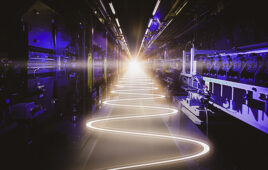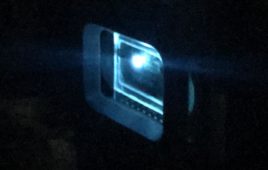
The measurement of elements with LIBS shall help to locate natural resources in a non-destructive way in the future. Image: GEOMAR (CC BY 4.0)
For the first time, scientists at the Laser Zentrum Hannover e.V. (LZH) have succeeded in measuring zinc samples at a pressure of 600 bar using laser-induced breakdown spectroscopy.
They were able to show that the LIBS system developed at the LZH is suitable for use in the deep sea at water depths of up to 6,000 meters.
Locating mineral resources on the sea floor has so far been rather expensive. In order to reduce the costs, the LZH is working with eight other European partners to develop a laser-based, autonomous measuring system for underwater use by 2020.
The system is supposed to detect samples, such as manganese nodules, and analyze their material composition directly on the deep sea ground.
For this purpose, the scientists at the LZH are developing a system for laser-induced breakdown spectroscopy (LIBS) within the scope of the ROBUST project. In order to test the LIBS system developed by LZH under deep-sea conditions, a special pressure chamber was designed and manufactured.
With the pressure chamber, a water depth of 6,500 meters can be simulated with a pressure of up to 650 bar.
The chamber is suitable for both freshwater and saltwater and can thus simulate various application scenarios.
Through a viewing window, the laser radiation enters the pressure chamber with the test sample to be analyzed.
LIBS is a non-contact and virtually non-destructive method of analyzing chemical elements. Solid materials, liquids and gases can be examined.
The method is based on the generation and analysis of laser-induced plasma. Here, a high-energy laser beam is focused on the sample.
The energy of the laser beam in the focal point is so high that plasma is created. The plasma in turn emits an element-specific radiation, which is measured with a spectroscope.
The emission lines in the spectrum can be assigned to the chemical elements of the sample.
Source: Laser Zentrum Hannover


